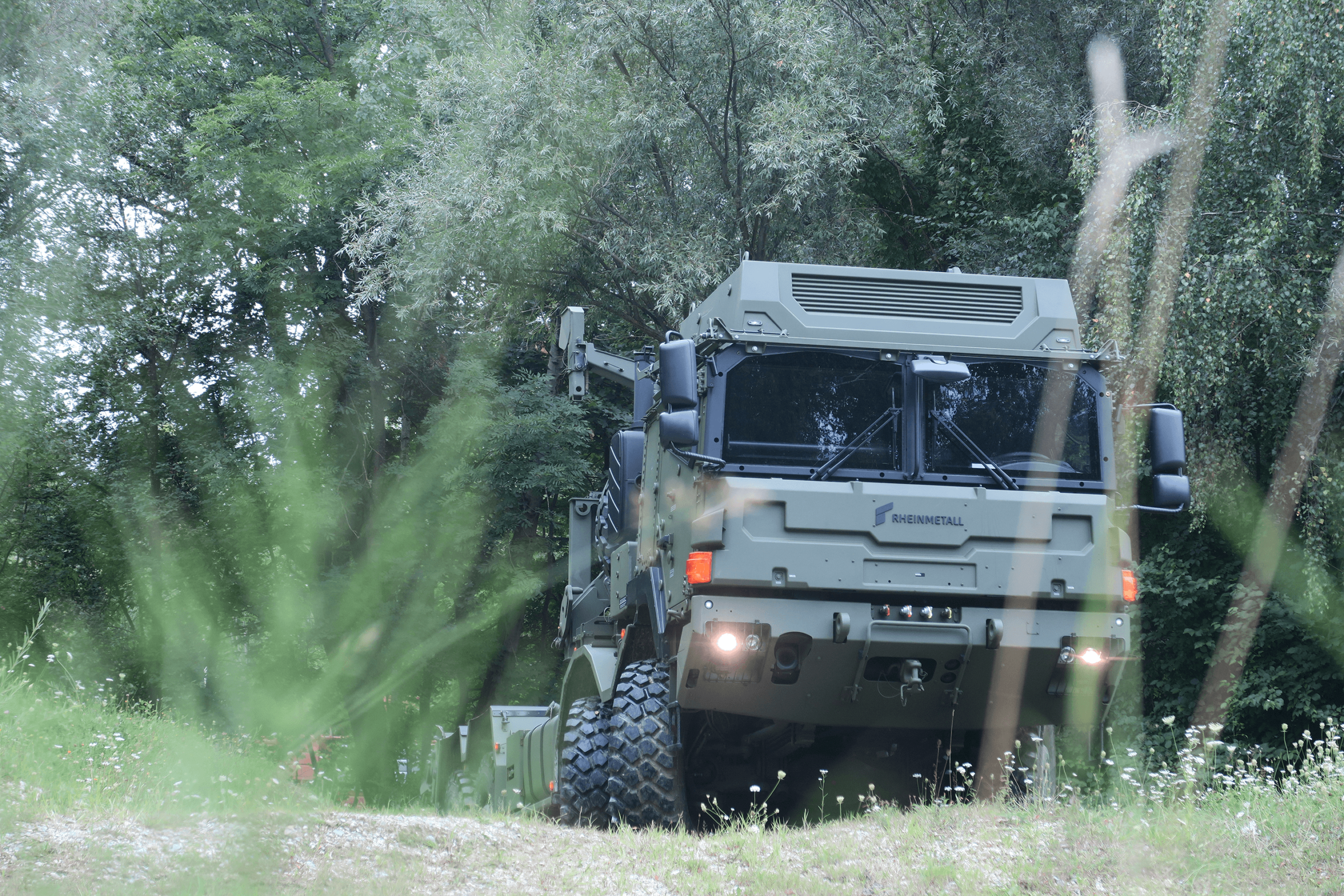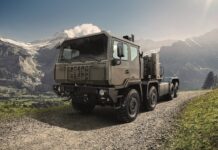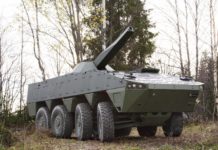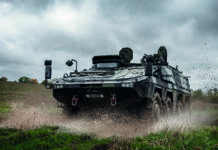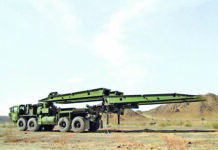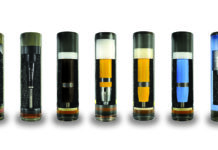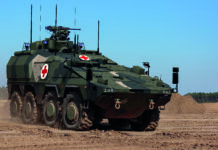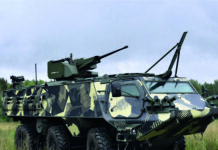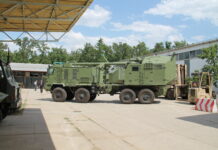As the threats facing military personnel today are of a different kind, crew protection systems are increasingly being fitted to military trucks.
Changing Picture for Military Trucks
In the past, military trucks tended to operate in the rear area, carrying vital ammunition, food, fuel and other essential supplies to front line units and were not expected to come into direct contract with enemy forces and were therefore not normally protected.
During operations in Afghanistan and Iraq, trucks were needed to keep outposts supplied with essential supplies and these soon came under regular attack, not only from small arms fire but also Rocket Propelled Grenades (RPG), mines and Improvised Explosive Devices (IED) which resulted in the total loss of the truck, its crew and valuable supplies. This lead to the rapid fielding of trucks with a protected cab to provide their occupants with a higher level of protection against an increasing wide range of threats.
Applique Armour
Today, some vehicle cabs are supplied fitted for but not with a passive applique armour package, as in normal peacetime training there is simply no need for additional armour protection, which in some cases can restrict the drivers view when travelling on civilian roads and also reduces its payload. Many other military vehicles are supplied with a very well protected cab, which is usually of welded steel to which an applique armour package is fitted from the beginning. Special bullet/splinter proof windows are also fitted to these well-protected cabs, but in some cases, these are much smaller than the normal windows so have tended to restrict observation, especially to the front and sides.
Exact ballistic protection levels depend on the end users requirements and where the vehicles are to be deployed but are usually to STANAG 4569 Level 2 or 3 which is small arms fire up to 7.62 mm attack. To provide higher levels of protection would make the cab much heavier and more expensive. For a higher level of protection against RPG fitted with a single High-Explosive Anti-Tank (HEAT) warhead, the cab could also be fitted with bar/slat armour, which is positioned away from the cab to neutralise the fuse of the warhead before it can be activated.
Net-Type Protection
An alternative to bar/slat armour is the British AmSafe Bridport TARIAN RPG series net device, which was developed by the company in partnership with the UK Defence Science and Technology Laboratory (DSTL). The first generation system was fitted to the cabs of some British Army Oshkosh Defense M1070F (8×8) Heavy Equipment Transporters (HET) initially deployed to Iraq. More recently, the latest generation TARIAN has been fitted to some of the General Dynamics Land Systems FOXHOUND (4×4) Protected Patrol Vehicles deployed to Mali. This is a light weight net type solution which is much lighter than bar/slat armour and in addition provides increased visibility for the crew and has also been sold overseas for installation on Armoured Fighting Vehicles (AFV) with the Danish Army being the first export customer.
QinetiQ North America has supplied large quantities of its Q-Net protection systems for not only the US armed forces but also foreign customers for installation on trucks as well as AFVs. According to the company, this is between 60% and 70% lighter than bar/slat armour and can be easily configured to install on all types of military vehicles, including trucks.
Engine Protection
In forward control cabs, the engine tends to be more to the rear while others have the engine at the front with the cab to the immediate rear. In some cases, the engine is protected as well, although not to the same high level as the cab as the crew are the most valuable asset.
Well-protected cabs normally have door opening and closing devices as the weight of the armoured door is so heavy that if the vehicle is on a side slope or at an angle the door is difficult to open manually to allow rapid exit of the crew. The forward control cab can normally be tilted forward to allow for access to the power pack for maintenance purposes, but when fitted with a fully protected cab, additional power assistance is required.
As the bullet/splinter proof windows cannot be opened, the fully enclosed and protected cabs are usually supplied with an air-conditioning system and a roof-mounted Protected Weapon System (PWS) typically armed with an un-stabilised 7.62 mm or a 12.7 mm Machine Gun (MG). Some high-value trucks have a roof mounted Remote Weapon Station (RWS) armed with a stabilised weapon which can be laid onto the target from with the cab in complete safety using a day and night sighting system. Some have also been fitted with banks of electrically operated smoke grenade launchers.
As previously stated, one of the main threats during Counter Insurgency (COIN) type operations has been IED attack and for this reason, many trucks deployed on operations are fitted with Electronic Counter Measures (ECM) at the front in order to neutralise IED. The cab can also be fitted with blast attenuating seats, communications and a Battle Management System (BMS), all of which require additional electrical power so the electrical system of the platform will also need upgrading and additional batteries installed.
Sourcing Protective Equipment
Many of these cab sub-systems such as PWS/RWS, weapons, communications and ECM equipment are provided by the end user as Government Furnished Equipment (GFE) for fleet commonality. While brand new trucks can be fitted with a fully protected cab, some countries have removed the existing unprotected cab and replaced this with brand new fully protected cab. This is not only an expensive option but the fully protected cab is also much heavier and the front suspension has to be upgraded or replaced to take into account the additional weight; otherwise the mobility of the vehicle will be degraded and its payload reduced.
The US company Firetrace Aerospace have supplied huge numbers of their fuel-tank fire suppression systems which are standard on many US platforms. A typical contract was for 6,696 kits for installation on the US Army Oshkosh Defense Heavy Expanded Mobility Tactical Truck (HEMTT) (8×8).
Rheinmetall MAN Military Vehicles has shown one of its military trucks fitted with a hard-kill Active Protection System (APS) but as far as it is known this has not been adopted by any country, although sales have been made for AFV applications as they are very expensive and difficult to integrate onto some platforms due to space problems. A hard-kill APS provides the platform with protection against not only RPG type threats but also anti-tank guided weapons (ATGW).
Arquus Defense
Arquus Defense (previously Renault Trucks Defense) are the major military truck manufacturer in France and supply the complete 6×6 chassis for the Nexter CAESAR 155 mm/52 cal self-propelled artillery system used by the French Army and an increasing number of export customers. This chassis is built at their Limoges facility complete with a fully protected cab and is then sent to Nexter in Roanne where the complete 155 mm/52
calibre weapon and other sub-systems are fitted. While France uses an Arquus Defense chassis for the CAESAR, other customers use other chassis, for example Tatra (8×8) or Mercedes-Benz UNIMOG (6×6). Arquus Defense has already upgraded many French Army GBC 8 KT (6×6) 4 tonne cargo trucks to a new standard called BC 180 (6×6) 5 tonne truck with the cab to the rear of the power pack having an optional applique armour package.
Using internal research and development funding, Arquus Defense has developed a new generation of military trucks called ARMIS. These are being marketed with the option of a protected cab. This family will be offered to the French Army to meet its future truck requirements, which is expected to be an open competition.
RMMV
Rheinmetall MAN Military Vehicles (RMMV) cross-country trucks are manufactured at their facilities in Vienna, Austria, while the protected cabs are manufactured in a purpose-built facility in Unterluss which has so far completed well over 2,500 cabs.
RMMV trucks can be fitted with the top of the range Integrated Armoured Cab (IAC) or the Modular Armoured Cab (MAC). The latter is provided with applique armour kits, which are fitted when the vehicle is deployed on operations rather than being installed on a day-to-day basis.
To increase local content, there is a trend to involve local suppliers and a good example is the UK contract with Marshall supplying the rear truck bodies for 4×4, 6×6 and 8×8 cargo trucks and EKA the recovery hamper for the 8×8 recovery vehicle. The first small batch of RMMV (the competition was actually won by MAN Truck & Bus) cargo trucks for the UK have an unprotected forward control cab and are used for driver training. Follow-up vehicles were fitted for but not with an applique armour package and for deployment in Iraq and Afghanistan, further survivability enhancements were made. These included a fully protected cab with:
- bar/slat armour
- wire cutters
- PWS
- electronic devices to counter IEDs
Other Suppliers
- Iveco Defence Vehicles of Italy have supplied fleets of military trucks to many countries including France, Germany and Italy, with all of these being of the forward control type.
- The US Oshkosh Family of Medium Tactical Vehicles (FMTV) are produced in 4×4 and 6×6 configurations with the option of a fully protected forward control cab.
- Applique armour packages are supplied by a number of contractors, with the Israel company of Plasan having supplied well of 35,000 applique armour kits as well as supplying vehicles fitted with their armour packages including 4×4 vehicles such as the SAND CAT. In response to a question by European Security & Defence, Plasan declined to confirm that they had supplied any protected cabs.
- Rheinmetall Protection Systems of Germany, which includes the world-famous IBD company, can supply complete passive protection packages for a variety of platforms including trucks.
- NP Aerospace of the UK has supplied applique armour packages for many vehicles at home and overseas as well as supplying protected vehicles based on a Land Rover DEFENDER (4×4) or Mercedes-Benz G-WAGON (4×4) chassis, but these are no longer marketed.
Different Applications
Most Russian military trucks are un-armoured but a few URAL (6×6) with a protected cab have been encountered in recent fighting in the Ukraine.
As previously stated, the CAESAR 155 mm/52 cal SP artillery system can be supplied with a protected cab but for some artillery systems, this is standard as the vehicle is delivered. Examples of this are the UK Lockheed Martin Missiles & Fire Control M142 High Mobility Artillery Rocket System (HIMARS) (227 mm – 6 round) which is based on the Oshkosh FMTV (6×6) truck chassis.
Another example is the Swedish BAE Systems Bofors ARCHER 155 mm/52 calibre (6×6) artillery system based on a Volvo chassis, which has a fully protected air-conditioned cab, and a roof-mounted Kongsberg RWS armed with a 12.7 mm MG. In addition to trucks and other tactical vehicles being fitted with protected cabs, some countries have fitted their key engineer support vehicles with protected crew cabs including bulldozers and graders, as during COIN operations these can come under direct fire.
Penman of the UK upgraded a significant number of engineer vehicles for the Royal Engineers, including Caterpillar 938 wheeled loaders which when fitted with the fully enclosed Penman Crew Protection System (CPS) were called Wheeled Loader – Protected.

